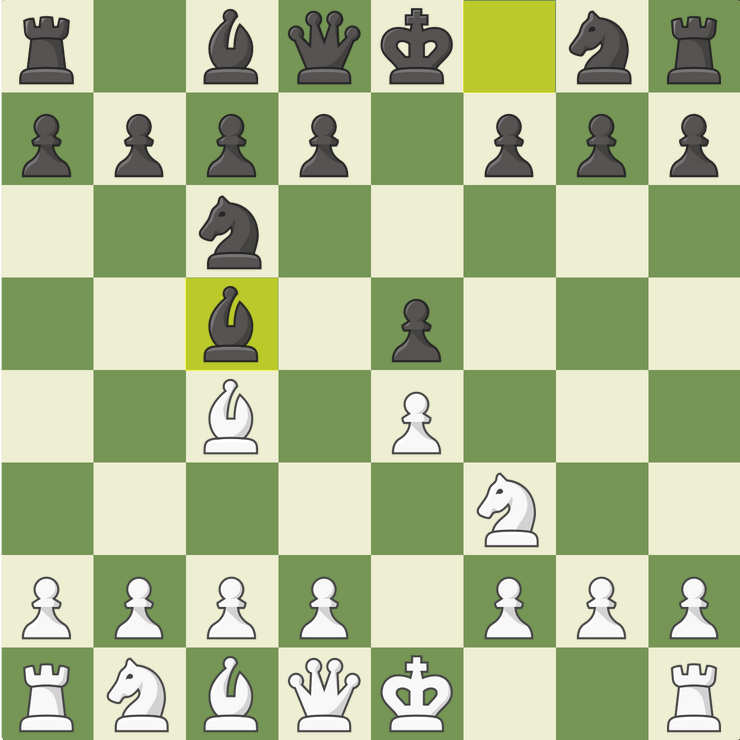Giuoco Piano Game
The Giuoco Piano is one of the variations of the Italian Game, a 1.e4 opening. The expression "giuoco piano" means "slow game" in Italian, which indicates this opening's nature that usually leads to a more positional rather than tactical game.
Although common among beginners, players of all levels choose this opening regularly—including legends like GMs Levon Aronian and Wesley So.
Starting Position
The Giuoco Piano starts with the moves 1.e4 e5 2.Nf3 Nc6 3.Bc4 Bc5. White develops their kingside pieces quickly, bringing the knight out to f3 and using their bishop to attack Black's f7-pawn. Black also develops their pieces naturally, first defending their e5-pawn with the knight and then attacking White's f2-pawn.

From there, White usually castles, and the game can take a few different turns, mostly leading to positional battles.
Pros
- It's an excellent opening for every level of player.
- It's a safe option for beginners.
- It's a tried and tested opening.
Cons
- There's a vast amount of theory on this opening.
- It leads to equality quickly, so there might be better choices for players looking for a fighting game.
Main Variations Of The Giuoco Piano
Games that start with the Giuoco Piano usually continue with the quieter classical or Giuoco Pianissimo variations. However, they can also transpose to the aggressive Evans Gambit. Below you can learn more about these three popular continuations.
Classical Variation
The Classical Variation of the Giuoco Piano starts after the moves 1.e4 e5 2.Nf3 Nc6 3.Bc4 Bc5 4.c3. White's fourth move controls the d4-square and prepares to play d2-d4 in the future to take full control of the center. White's 4.c3 also restricts the black c6-knight's movement.
The game usually progresses with Black developing their kingside knight to f6. White then has the option of striking in the center immediately with 5.d4 or transposing to the Giuoco Pianissimo with 5.d3.
Giuoco Pianissimo
Giuoco Pianissimo translates to "very slow game," an apt name for the variation that starts after 1.e4 e5 2.Nf3 Nc6 3.Bc4 Bc5 4.d3. White reinforces the center and adds a defender to the e4-pawn. The move also opens the diagonal for White's dark-squared bishop to develop and defends the light-squared bishop on c4.
White's idea is to delay challenging Black's central control and pursue a more positional game.
Evans Gambit
Though most games in the Giuoco Piano are quiet, White can strive for a more aggressive and tactical game by transposing to the Evans Gambit. This particular line happens with the moves 1.e4 e5 2.Nf3 Nc6 3.Bc4 Bc5 4.b4, when White offers a pawn sacrifice and attacks Black's bishop.
Black usually chooses between accepting the sacrifice with 4...Bxb4 or declining it with 4...Bb6. Although not as common among elite players due to Black's favorable results, the Evans Gambit is still a playable line for club-level players.
History Of The Giuoco Piano
The Giuoco Piano is one of the oldest openings in chess. The Portuguese chess master Pedro Damiano first analyzed the opening in his 1512 book Questo libro e da imparare giocare a scachi Et de Belitissimi Partiti (This book is for learning to play chess and truly beautiful games).

The opening has been extremely popular since then, with masters employing it regularly.